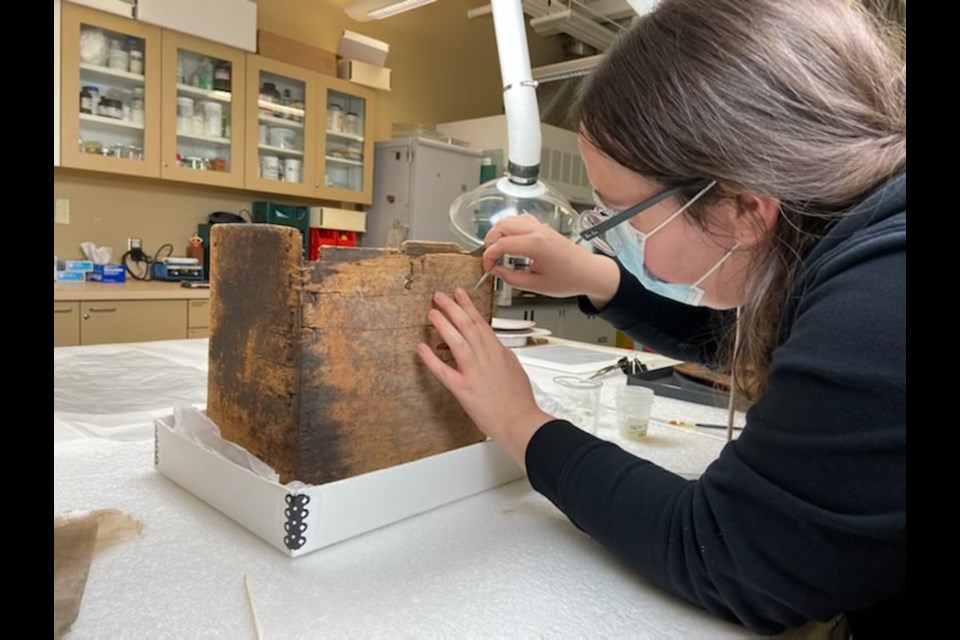It’s deeply emotional to hold a piece of history in your hands left behind hundreds or even thousands of years ago, but especially when the piece is from your own ancestors.
Interning at UBC’s Museum of Anthropology (MOA), Kelsey Sparrow has had the opportunity to do exactly that – to hold a 400 to 800-year-old cedar root basket uncovered on the Musqueam reserve, in the mud banks at the mouth of the Fraser River.
The Coast Salish, Musqueam and Ojibwe artist who grew up in Ladner has been focusing mainly on “wet-site basketry” since beginning MOA’s Indigenous Internship Program last October, and the cedar root basket they got to hold during their first week is part of that.
“Wet-site archaeology is a whole field of archaeology where things have been preserved in really low-oxygen environments, [like in mud around bodies of water], for sometimes thousands of years,” says Sparrow.
Some of the wet-site baskets at MOA have been carbon dated to be 4,000 years old, preserved by environments that prevent bacteria from eating away the organic materials that otherwise would be broken down over time
“The thing with wet-site basketry and any other wet-site archaeology is, as soon as it’s unearthed, you have to do measures right away to take care of it. Because if it dries out, it basically just disintegrates,” they say.
Compared to other more-established conservation practices, wet-site conservation is still developing and therefore doesn’t have a documented protocol yet.
“One of [MOA’s] goals is to develop a kind of protocol around it so that communities around B.C., if they have wet-site basketry, they can have a protocol to follow to conservate it themselves at their cultural institutions,” says Sparrow.
Wet-site basketry conservation also offers a look into historical weaving practices.
“Some of the artists who come to visit MOA are weavers, and sometimes they’ll look at old basketry and realize, ‘Wait, this was woven in a completely different way than we do.’ And they’ll figure it out just from looking at it how to recreate that,” says Sparrow.
The uncovered baskets also provide visual evidence of land occupation and territory.
“The ethics of how all these objects came into the collection, I struggle with sometimes, but I feel like it’s more important to have Indigenous people there working on taking care of these objects and being stewards,” they say. “It just feels good to be able to take care of them the way they should be taken care of ... It’s really rewarding.”
If you’re interested in Kelsey Sparrow’s art and what they’re up to, check out their website at:https://kelseysparrow.com/.



